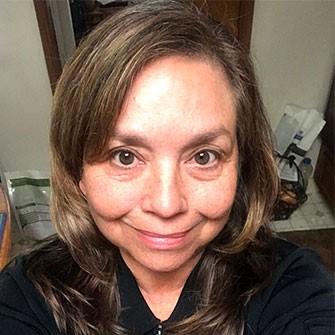The intent of the Creative and Novel Ideas in HIV Research (CNIHR) program is to attract both international and U.S.-based early stage investigators from outside the field of HIV research to help address key scientific questions in HIV research, including emerging issues of long-term survival with HIV infection, prevention of HIV transmission and research towards a cure.
- Term: Up to 2 years
- Up to $150,000 direct cost per year, (the amount of the award will vary depending on the proposal)
11 Awards
-
Targeting NK cell activity to eradicate the HIV-1 reservoir
Targeting NK cell activity to eradicate the HIV-1 reservoir

Abstract
Antiretroviral therapy (ART) has been effective in the suppression of HIV-1 viremia, but does not eliminate the reservoir of cells with latent HIV-1 infection, obligating lifelong therapy. Recent work has identified mechanisms for activating HIV-1 transcription in latently infected cells without inducing cellular activation, including the use of histone deacetylase (HDAC) inhibitors. This offers a pathway towards potential eradication of the viral reservoir and cure of the infection.
-
Sampling and Analysis of Thoracic Duct Lymphocytes in HIV+ Patients
Sampling and Analysis of Thoracic Duct Lymphocytes in HIV+ Patients

Abstract
A major contributor to HIV persistence despite antiretroviral therapy (ART) is latent infection in long-lived CD4+ cell populations. Subsets of these cells have been shown to harbor virus and activate to re-establish infection when ART is stopped. Classification of discreet cell types and the mechanism by which reservoirs are maintained has been limited by lack of access to these cells, which are found in very small numbers in circulating blood.
-
Gut Barrier Dysfunction and Dysbiosis on HIV Persistence and Immune Activation
Gut Barrier Dysfunction and Dysbiosis on HIV Persistence and Immune Activation

Abstract
Despite the remarkable success of ART, HIV patients still experience excess mortality and morbidities. Persistent inflammation strongly predicts these complications and is likely an important mediator of disease hampering efforts towards a functional cure. While the etiology of persistent immune activation is incompletely understood, compromised mucosal barrier function and increased translocation of immunostimulatory microbial products from the gut lumen into the systemic circulation have been implicated.
-
Sampling and Analysis of Thoracic Duct Lymphocytes in HIV+ Patients
Sampling and Analysis of Thoracic Duct Lymphocytes in HIV+ Patients

Abstract
A major contributor to HIV persistence despite antiretroviral therapy (ART) is latent infection in long-lived CD4+ cell populations. Subsets of these cells have been shown to harbor virus and activate to re-establish infection when ART is stopped. Classification of discreet cell types and the mechanism by which reservoirs are maintained has been limited by lack of access to these cells, which are found in very small numbers in circulating blood.
-
Gut Barrier Dysfunction and Dysbiosis on HIV Persistence and Immune Activation
Gut Barrier Dysfunction and Dysbiosis on HIV Persistence and Immune Activation

Abstract
Despite the remarkable success of ART, HIV patients still experience excess mortality and morbidities. Persistent inflammation strongly predicts these complications and is likely an important mediator of disease hampering efforts towards a functional cure. While the etiology of persistent immune activation is incompletely understood, compromised mucosal barrier function and increased translocation of immunostimulatory microbial products from the gut lumen into the systemic circulation have been implicated.
-
Impact of Integration Site Selection on HIV Persistence
Impact of Integration Site Selection on HIV Persistence
Abstract
We will study the role of integration site distribution on the establishment of a latent reservoir and ultimately aim at preventing the establishment of a latent reservoir for HIV by manipulation of the HIV-1 integrase - LEDGF/p75 interaction. Our concept is based on the retargeting of HIV integration towards regions of the human genome that are less, or even not prone to reactivation. When successful, our strategy may lead to functional eradication of HIV.
-
Impact of CMV replication on the HIV-1 latent reservoir
Impact of CMV replication on the HIV-1 latent reservoir

Abstract
Replication competent HIV DNA that persists during antiretroviral therapy (ART) is the main impediment to HIV eradication. Levels of latent HIV DNA also predict the rate of CD4+ T-cell loss, time to AIDS, virologic failure of ART and end organ disease; therefore, reducing provial levels could have substantial clinical benefits. CMV replication in the genital tract is associated with higher levels of T-cell immune activation within both the genital compartment and peripheral blood.
-
Impact of Integration Site Selection on HIV Persistence
Impact of Integration Site Selection on HIV Persistence
Abstract
We will study the role of integration site distribution on the establishment of a latent reservoir and ultimately aim at preventing the establishment of a latent reservoir for HIV by manipulation of the HIV-1 integrase - LEDGF/p75 interaction. Our concept is based on the retargeting of HIV integration towards regions of the human genome that are less, or even not prone to reactivation. When successful, our strategy may lead to functional eradication of HIV.
-
Impact of CMV replication on the HIV-1 latent reservoir
Impact of CMV replication on the HIV-1 latent reservoir

Abstract
Replication competent HIV DNA that persists during antiretroviral therapy (ART) is the main impediment to HIV eradication. Levels of latent HIV DNA also predict the rate of CD4+ T-cell loss, time to AIDS, virologic failure of ART and end organ disease; therefore, reducing provial levels could have substantial clinical benefits. CMV replication in the genital tract is associated with higher levels of T-cell immune activation within both the genital compartment and peripheral blood.
-
Development of a diagnostic T cell assay to confirm disruption of latent HIV-1 infection
Development of a diagnostic T cell assay to confirm disruption of latent HIV-1 infection
Abstract
Current methodologies to quantify latent HIV-1 infection demand high cell numbers, require repeated leukapheresis of subjects and highly expert molecular biology techniques. For HIV cure regimens to reach the clinic, efficient and high-throughput diagnostic assays will be needed to confirm disruption of latent HIV-1 infection, preferably while patients continue antiretroviral therapy (ART).

